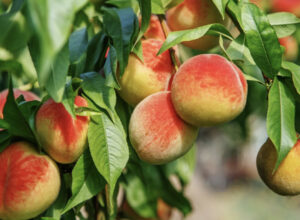How to Care for a Pomegranate Tree: Useful Tips

Pomegranate trees, with their luscious fruits and ornamental charm, have been cultivated for thousands of years. Originating from Old Testament times, these hardy trees are not only valued for their fruits but also for the aesthetic pleasure they offer. In this article, we provide a detailed guide on how to take care of a pomegranate tree and answer some common questions related to its growth and care.
The History of the Pomegranate Tree
Pomegranates have been cherished since ancient times. These fruits are mentioned in religious texts, and historical documents, and have even been discovered in ancient Egyptian tombs. Apart from their historical significance, pomegranates offer numerous health benefits, making them a revered fruit across different cultures.
Characteristics of the Pomegranate Tree
Pomegranates have a distinct appearance. Their leather-like smooth skin, which comes in a variety of colors, envelopes the arils – the juicy, edible part of the fruit. Beyond their fruit, pomegranate trees are appreciated for their shiny green foliage and crimson blossoms. The leaves exhibit a stunning yellow hue just before they shed.
Ideal Conditions for Growth
Warm, arid regions such as parts of Arizona and California are perfect for pomegranate trees. These trees are heat-loving and have a high drought tolerance. However, they also require a good amount of sun, at least 6 hours of direct sunlight, for optimal growth.
Planting and Cultivation
- Determining the Type of Pomegranate Tree
Before planting, it’s essential to choose a type suitable for your region’s climate. Various pomegranate varieties have unique characteristics, with some even suited for cooler zones. Here are some popular varieties:
| Variety Name | Fruit Size | Skin Color | Flavor | Notable Features |
| Balegal | Large | Pale Pink | Sweet | Hardy to zone 7 |
| Crab | Medium to Large | Bronze | Tart | Highly Productive |
| Early Wonderful | Large | Thin Red | Tart | Very Productive |
| Granada | Medium | Crimson | Semi-Sweet | Matures Early |
- Planting Process
The best times for planting pomegranates are during spring or fall. Ensure that the chosen spot has adequate sunlight and well-draining soil.
- Post-Planting Care
Once planted, young trees need frequent watering until they establish themselves. Mature trees require deep watering during summer. Fertilize your tree around February or use organic fertilizers 2–3 times annually.
Addressing Common Problems
This section delves into common issues associated with pomegranate trees and their remedies.
No Fruits After Blossoming
If your tree blossoms but doesn’t yield fruits, the probable causes are excessive watering, poor drainage, over-fertilization, or inadequate sunlight.
Determining Harvest Time
Pomegranate varieties have different ripening periods, usually between August to November. Changes in the fruit’s shape, skin texture, and color indicate its ripeness.
Fruit Splitting and Rottening
Consistent moisture levels prevent fruit splitting. However, pomegranates left on the tree for too long might split. Fruit rotting is often due to fungal infections or pests.
Harvesting and Usage
Once ripe, pomegranates can be easily twisted off the stem, but it’s advisable to cut them off to prevent damage. Harvested arils can be consumed directly or used in recipes like the Pomegranate Jalapeño Cream Cheese Dip.
Pruning and Training Pomegranate Trees
Pruning is an essential aspect of caring for a pomegranate tree, primarily aimed at shaping the tree, enhancing airflow, and ensuring better fruit production. A well-pruned tree has better resistance to diseases and produces superior-quality fruits. Here’s a deeper look into this critical practice:
- When to Prune: The best time to prune pomegranate trees is late winter or early spring, right before new growth starts. This timing ensures that the tree heals rapidly and minimizes the risk of disease infestation.
- Pruning Young Trees: In the early stages, pruning aims to establish a strong structural foundation. Start by selecting 3-5 strong main branches, evenly spaced around the tree’s trunk, and remove all others. This selection provides the scaffold for the tree’s eventual shape.
- Pruning Mature Trees: As the tree matures, focus on removing dead or diseased wood and thinning out crowded areas. Ensure that the tree’s interior gets enough sunlight and air circulation. Over time, some main branches might become less productive. It’s wise to cut them back to allow younger, more productive shoots to take over.
- Training for Specific Shapes: Some gardeners prefer training pomegranate trees into specific forms, such as a bush, a standard single-trunk tree, or even an espalier. The training process should begin when the tree is young and be reinforced as it grows.
- Tools and Tips: Always use sharp and sanitized pruning shears or saws. Clean cuts heal faster and are less prone to infections. Wear gloves and protective eyewear to safeguard against accidental injuries.
Tackling Pests
One of the major pests is the leaf-footed bug, which can significantly damage ripe fruits. Regularly inspecting your tree and eliminating these pests in their early stages is crucial.
The Benefits of Pomegranates
Beyond their delightful taste, pomegranates are packed with antioxidants and have anti-inflammatory properties. They have been linked to reduced risks of chronic diseases and are a heart-healthy choice.

Different Uses of Pomegranate Trees
Apart from consuming the fruit, pomegranate trees have other uses. Their bark can be used for tanning leather, and their flowers can be a source of dye. Moreover, the tree’s wood is sturdy and can be used for crafting.
Fun Facts and Myths Surrounding Pomegranates
Did you know that pomegranates are believed to have decorated the pillars of Solomon’s temple in Jerusalem? They are also associated with myths from various cultures, including the Greek myth of Persephone.
The Cultural and Symbolic Significance of Pomegranates
The pomegranate is not just a fruit; it’s a symbol deeply entrenched in various cultures and religions. Its historical and symbolic value spans centuries and continents, weaving a rich tapestry of significance.
- In Ancient Civilizations: Pomegranates have been found in ancient Egyptian tombs and are often associated with life after death. In ancient Greek culture, the fruit symbolized life, regeneration, and even marriage.
- Religious Texts: The pomegranate is mentioned multiple times in the Bible, symbolizing fruitfulness, knowledge, and wisdom. In the Quran, pomegranates are cited as examples of the divine’s creation, pointing to the fruit’s intricate design and beneficial properties.
- Art and Literature: Throughout art history, pomegranates have appeared in paintings, mosaics, and literature. Their representation can indicate various themes, from fertility and abundance to temptation and knowledge.
- Modern Symbolism: Today, the pomegranate is often used in logos and brand designs, signifying growth, prosperity, and vitality. Its iconic shape and vibrant color make it an appealing visual symbol.
- Celebrations and Traditions: In some cultures, pomegranates are integral to specific celebrations. For instance, during Rosh Hashanah, the Jewish New Year, it’s customary to eat pomegranates, representing a year filled with as many blessings as the fruit’s seeds.
By understanding the cultural and symbolic nuances of pomegranates, one can appreciate their depth and significance beyond their culinary uses.
Pomegranate in Global Cuisine
The pomegranate’s journey from its historical origins to kitchens around the world is a testament to its versatility and allure. Its sweet-tart flavor and jewel-like arils have found their way into a plethora of dishes, transcending borders and culinary traditions.
In Middle Eastern cuisine, pomegranate molasses, a thick syrup made by reducing pomegranate juice, is a staple. It imparts a tangy sweetness to dishes, from marinades for grilled meats to dressings for salads like fattoush. Persian cuisine celebrates this fruit in dishes like Fesenjān, a rich stew made with ground walnuts and pomegranate syrup.
India, with its diverse palate, incorporates pomegranate in various ways. Apart from consuming it fresh, it’s often sprinkled as a garnish on dishes to add a burst of color and flavor. In Spain, the chilled soup, “gazpacho,” might see a version adorned with pomegranate seeds for added crunch and zest.
Moreover, cocktails and mocktails globally have embraced pomegranate juice for its vibrant color and unique taste. The famous “Pomegranate Martini” or a simple pomegranate spritzer can enliven a summer afternoon.
As pomegranate continues its culinary voyage, it stands as a symbol of the global palette’s unity, bringing diverse tastes together in harmony
Conclusion
The pomegranate, with its rich history, cultural significance, and myriad health benefits, is truly a marvel of nature. From its origins in the ancient world to its contemporary uses and importance, the fruit has been revered for its unique flavor and potent nutritional profile. Cultivating pomegranates is not just about reaping the culinary benefits; it is also about becoming part of an age-old tradition that connects different cultures and civilizations. Proper care, understanding the nuances of its growth, and appreciating its symbolic value can make the journey of growing and consuming pomegranates even more rewarding.
FAQ
1. How long does it take for a pomegranate tree to bear fruit?
Typically, a pomegranate tree starts bearing fruit 2–4 years after planting. However, the exact time can vary based on factors like tree variety, growing conditions, and care practices.
2. Can pomegranates be grown in containers?
Yes, pomegranates can be successfully grown in containers. Dwarf varieties are especially suited for container gardening. Ensure that the pot has adequate drainage and is large enough to support the tree’s growth.
3. Are all pomegranates red inside?
No, while the most common variety has ruby-red arils, pomegranates come in various shades, ranging from deep red to pale pink and even white.
4. What are the primary pests that affect pomegranate trees?
Pomegranate trees can be susceptible to pests like aphids, whiteflies, and mealybugs. Regular inspections and appropriate measures can help manage and prevent these infestations.
5. Is the entire pomegranate fruit edible?
While the juicy arils of the pomegranate are edible and delicious, the white pith surrounding them is bitter and generally not consumed. The outer skin is tough and inedible.




